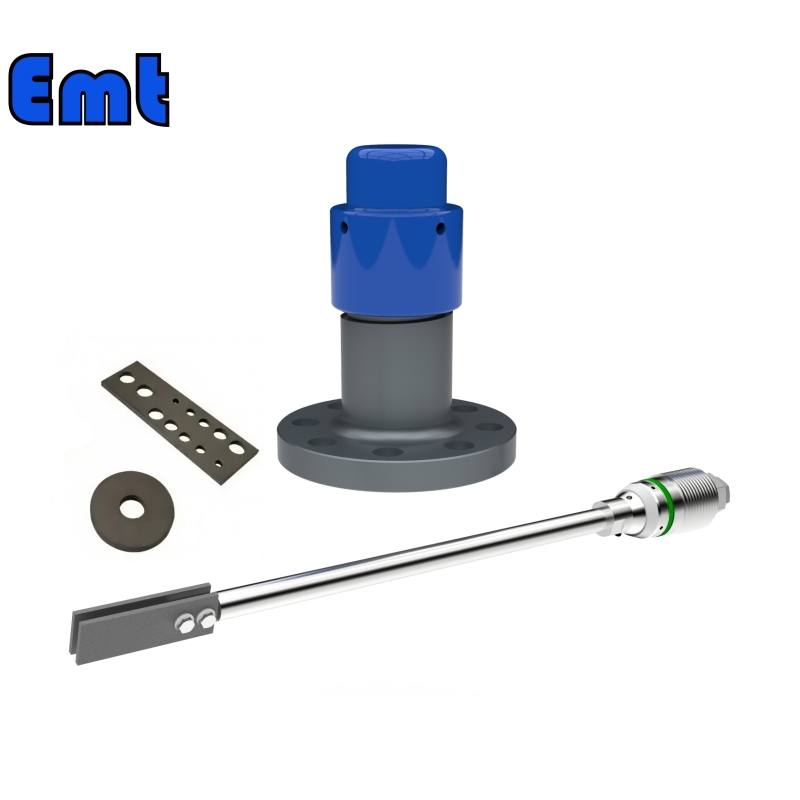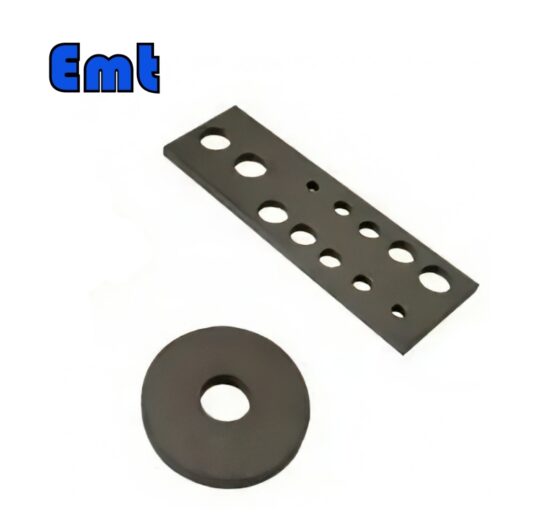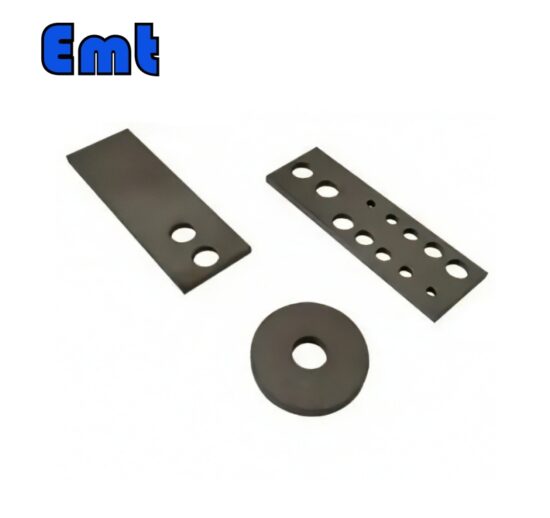Introduction to Corrosion and Scale Coupons
كوبونات التآكل, typically made of the same material as the system’s pipelines, expose themselves to the same fluids and conditions. This exposure helps determine the corrosiveness of the environment they operate within. Scale coupons, on the other hand, are specially designed with perforations. These perforations help emphasize any potential scale deposition, crucial for assessing the scaling tendencies of the fluids.
Corrosion and scale coupons serve as essential tools in industrial settings. These tools primarily monitor and measure the rate of corrosion and scale formation within pipelines and equipment. Industries use these coupons to mimic the internal conditions of their operational systems. By doing this, they gather critical data on the material degradation and accumulation processes that occur during regular operations.
Both types of coupons are vital for maintaining the integrity and efficiency of industrial systems. They allow operators to predict potential failures and implement preventative measures accordingly. Moreover, these coupons help in evaluating the effectiveness of corrosion and scale inhibitors being used in the system. Thus, they contribute significantly to the optimization of maintenance strategies and the prolongation of equipment life.
Material and Exposure
Corrosion coupons typically consist of ANSI 1018 or 1020 mild steel. These materials closely match many industrial pipeline compositions. Industries choose these materials for their representative nature in corrosion testing. By using the same material as the pipeline, the coupons accurately mirror the corrosion that occurs in the actual system. Operators place these coupons directly in the flow of process fluids. This exposure ensures that they experience the same conditions as the pipeline. The similarity in material and exposure conditions allows for authentic assessment results.
Assessment Method
To determine the corrosion rate, operators measure the weight loss of a coupon after its exposure period. This method directly reflects the intensity of corrosion impacting the system. A precise scale measures the slight changes in weight, which indicate the degree of material loss. Following exposure, some coupons may also exhibit deposits. According to NACE Standard RP0775, operators must carefully separate and weigh these deposits. This standard provides guidelines for identifying and handling the deposits, ensuring consistent and accurate analyses. Thus, they can quantify the degree of scaling or corrosion products deposited over time.
Scale Coupons
Design and Placement
Scale coupons are specially designed with perforations to emphasize and capture scale deposition effectively. These perforations help in collecting scale directly from the fluid flow, providing a clear indicator of scaling intensity. Operators typically position these coupons strategically within the system where they receive maximum exposure to the flowing media. This placement ensures that the coupons experience conditions representative of the entire system, allowing for accurate scale monitoring.
Evaluation Methods
To calculate the average scale growth rate, operators periodically remove the scale coupons and measure the accumulated deposits. They weigh the deposits and compare these figures against the exposure time to calculate the rate of scale growth. The severity of scaling is then assessed based on how quickly and densely the deposits accumulate in the coupon holes. More rapid and dense accumulation indicates a higher severity of scaling, calling for adjustments in water treatment or system operation.
Types of Scale Coupons
There are primarily two types of scale coupons: strip and cylindrical. Strip coupons are more commonly used due to their simplicity and ease of installation and evaluation. Cylindrical coupons, while providing a different surface geometry, are less common but can be used in specific applications where their shape might mimic system conditions more closely.
Application for Scale Treatment Assessment
Scale coupons serve a crucial role in evaluating and assessing the effectiveness of scale treatment methods. By observing the changes in scale deposition before and after applying a treatment, operators can gauge the efficacy of different chemicals or physical treatment strategies. This direct feedback allows for fine-tuning of the treatment process, optimizing the system’s protection against scale-related damage and inefficiencies.
Insulated Corrosion Coupons
Installation and Characteristics:
Insulated corrosion coupons typically measure 3/4 × 3 × 1/8 inches. These dimensions make them suitable for various industrial applications. Operators often install these coupons adjacent to injection wells, specifically in locations that are less influenced by plant operations, such as the lowest volume injection well furthest from the plant. This strategic placement helps in gathering data that is reflective of typical system conditions rather than anomalies.
For preparation, the industry adheres to ASTM Method G1-72 and NACE RP 07-75. These standards guide the preparation and handling of corrosion coupons to ensure consistency and reliability. They outline procedures for cleaning, weighing, and documenting the coupons both before and after exposure.
Operational Insight:
Insulated corrosion coupons are designed to measure the corrosivity of water in isolation from the system’s electrical influences. They achieve this by being electrically insulated from the system, supposedly isolating them from external corrosive factors. However, in practice, these coupons often reveal more about the system’s conditions. Conductive films, often formed due to bacterial growth or other contaminants, can breach the insulation. This occurrence allows the coupons to unintentionally measure broader system corrosivity. As such, the results from insulated coupons can provide unexpected insights into the overall health and challenges facing an industrial system, beyond just water corrosivity. This dual functionality, while unintended, enhances its utility in diagnosing system issues.
Comparative Analysis of Corrosion Rates
Factors Influencing Corrosion Rates:
Corrosion coupons might exhibit higher corrosion rates than nearby spools or tubing for several reasons. Firstly, the material of the coupons may be more susceptible to corrosion. Even slight differences in material composition can significantly affect corrosion rates. Additionally, the cleanliness of the corrosion coupons plays a crucial role. Freshly prepared and clean coupons might corrode more quickly initially when exposed to aggressive environments. Lastly, the environment where operators install the coupons impacts their corrosion rate. Placement in areas of high corrosive activity, or where protective coatings are compromised, typically shows increased corrosion.
Impact of Turbulence and Deposit Characteristics:
The way operators install corrosion coupons can greatly influence the local flow characteristics. Incorrect placement can create unusual flow patterns, increasing turbulence around the coupon. This increased turbulence can enhance the rate of corrosion by constantly removing protective layers from the coupon’s surface. Moreover, turbulence affects how deposits form on the coupon. In high-turbulence areas, deposits might not adhere well, while in low-turbulence zones, thick deposits could build up, affecting the corrosion process. Both scenarios provide critical insights into the dynamic interactions between flow conditions and material degradation in industrial systems.
خاتمة
Corrosion and scale coupons play a vital role in monitoring and maintaining pipeline integrity. These tools provide essential insights into the internal conditions of industrial systems. By accurately mimicking system environments, they allow operators to predict and prevent potential failures. Furthermore, the importance of accurate assessment methods cannot be overstated. Consistent application of these methods ensures reliable data collection. Adhering to industry standards, such as NACE and ASTM, enhances the validity of these assessments. Ultimately, this commitment to precision and standardization underpins effective system management, safeguarding equipment, and optimizing operational efficiency.









لا توجد مراجعات بعد.